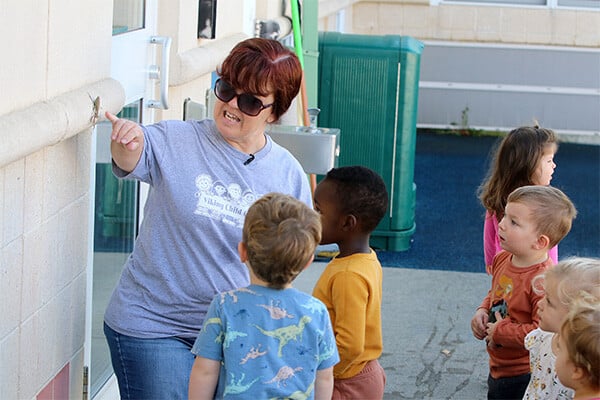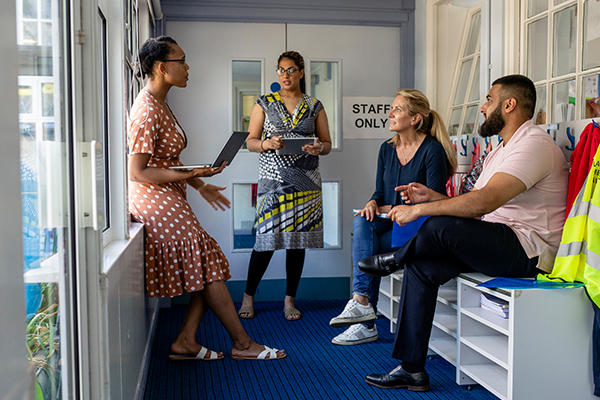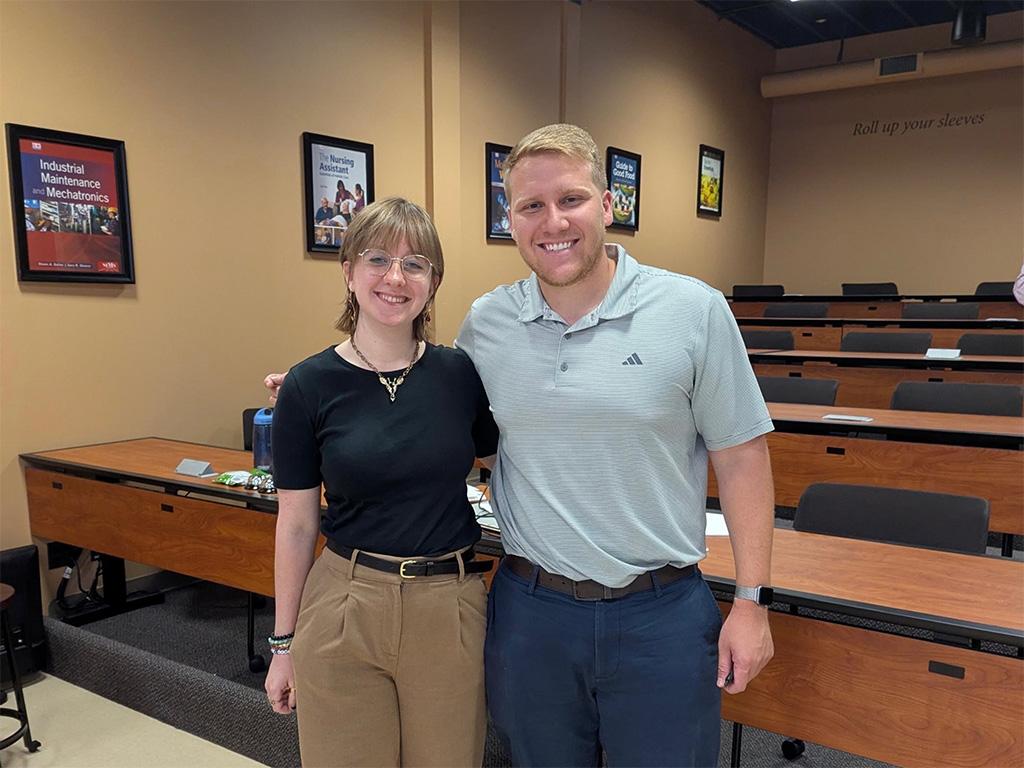My career path has been a boomerang: from educational publishing to teaching, and then back to educational publishing again.
When I came back to publishing the second time, I couldn’t wait to use my field knowledge to make great textbooks. G-W provided my perfect playground, hiring me to develop a line of collegiate textbooks for future early childhood educators. I vowed to produce content that was inclusive, standards-based, and would show budding teachers exactly what they will be facing out there in the classrooms.
There was one thing I knew we had to get just right: the photos.
When searching for photos to use in our ECE resources, I quickly found that early childhood education (ECE) is a special case. It just seemed there was always something “off” in the available stock images that I found. Getting the photos “just right” meant that they had to be:
Inclusive. All future teachers need and deserve to feel represented so they can envision themselves in a teaching role. They also need to see a diverse representation of the children with whom they will be working throughout their career: children from all backgrounds, cultures, races, and ability levels.
Authentic. Many of the stock images lacked authenticity and looked staged. Either the photos were clearly taken on a “set,” not in a classroom, or they were taken in a classroom that was unlike any I’d ever seen, bespeckled with top-of-the-line space-aged toys and designer furniture. This couldn’t be in further contrast to what I saw in the publicly funded schools where I taught. Where were the well-worn, donated toys? Where were the threadbare circle-time rugs? Where were the faded plastic chairs with the crayon marks that never seemed to wash off?
Capturing A Day in the Life. The nuances of real learning environments—and real teacher–child interactions—cannot be fabricated. Only “fly-on-the-wall”, unscripted photos and videos that are taken in genuine early learning environments can capture the dynamic, sometimes messy, but always enriching reality of early learning.
An Exploration of All Things ECE. ECE teachers create and use standards-based lesson plans every day. They engage children in each learning domain—cognitive, physical, linguistic, social-emotional—and integrate key concepts across all subjects. It’s a lot! To build their skills, future educators need to see photos and videos of other teachers in action. They need to see a teacher turn a simple counting lesson into a physical and social activity. They need to see other teachers managing the behaviors of 20 four-year-olds as they navigate center time. They need to see the countless little things that teachers do on a daily basis, all of which could never be described in words in a textbook.
So…we needed a plan.
We decided that the best way to help future teachers was to capture both still photography—for use within the books—and video footage, which would be made available to instructors as part of the online package when they purchased a textbook. We also wanted to visit different types of learning environments for as much variation as possible. We landed on:
Traditional Early Learning Center
This location has programs for infants, toddlers, and preschoolers. Here we saw safe and developmentally appropriate learning environments for all three age groups. We captured planned art activities, spontaneous science lessons, social interactions, and child guidance. We saw family–teacher interactions at drop-off time. And of course, we saw some pretty amazing children and teachers going about their daily learning activities.





We were positively tickled pink that a praying mantis decided to show up for our shoot! Its agent must have gotten word.
Montessori Learning Center
Maria Montessori’s methods have endured for over a century. Today, there are upwards of 5,000 Montessori schools in the United States alone. Because a Montessori environment looks quite different than a traditional early learning center—laden with special Montessori “manipulatives” (not toys!) and run by “guides” (not teachers!), it was important to us to include visuals from a Montessori school in our ECE line. This particular Montessori facility services preschool and school-aged children. It is also a bilingual program, so all lessons and classroom labels are in English and Spanish.






A Montessori guide’s job is to provide educational materials for children to explore at will, then circulate the space, always looking for ways to insert some enrichment. Watch as this guide encourages a preschooler’s science exploration.
Needs-Based Learning Center
With the push for all children to learn in the “least restrictive environment” possible, even “regular ed” teachers will be working with children who have various exceptionalities. So for our next shoot, we headed to a multi-needs classroom in a publicly funded preschool. A particular benefit to this shoot was the opportunity to show related-services professionals—speech pathologists, vision itinerants, bilingual teachers, physical therapists, and occupational therapists—working with children. We were also able to highlight some of the assistive technology that helps nonverbal children and/or children with physical challenges participate in a classroom setting.









When working with nonverbal children, speech pathologists and other ECE professionals get creative in their efforts to encourage communication. In this video, a speech pathologist knows that Jayden likes bubbles, so she periodically stops the bubble machine and coaxes Jayden to press “more” on his talker (a tablet with picture and word prompts). He succeeds!
In ECE textbooks, every image tells a story. Authentic, original photography and videos ensure that these stories are accurate, inclusive, and meaningful. By investing in real-world imagery, we not only support college students in their learning journey but also contribute to the future of high-quality early childhood education.
For more information on G-W’s growing line of ECE resources, visit www.g-w.com/ece.




